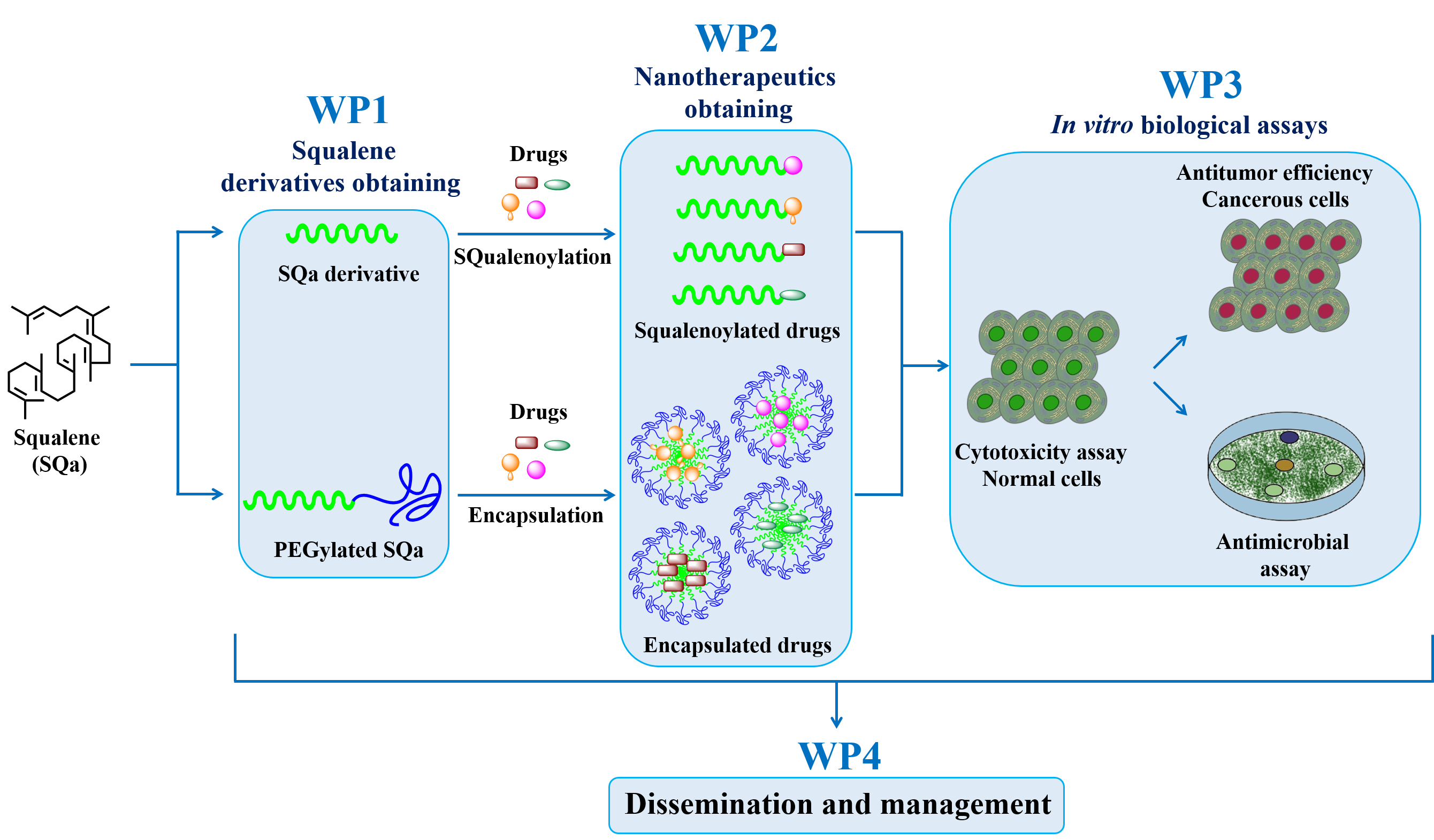Squalenoylation and micellar encapsulation as an effective approach for enhancing the biological properties of the antitumoral and antimicrobial drugs (Drug-ReSQue)
Project code: PN-III-P1-1.1-PD-2021-0606
Contract no. PD37/2022
Program name in PN III: Program 1 - Development of the national system of Research and Development
Subprogram name: Subprogram 1.1 - Human Resources
Project type: Postdoctoral Research Projects (PD)
Financing Authority: Executive Agency for Higher Education, Research, Development and Innovation Funding (UEFISCDI)
Project duration: 24 months
Project budget: 250.000,00 LEI
About Drug-ReSQue project:
The field of nanomedicine has gained significant attention in recent decades due to the possibility of the nanotherapeutics or nanoformulations to give a better treatment for a wide range of serious diseases (cancer, neurological disorders and cardiovascular pathologies).

The main goal of the Drug-ReSQue project is to develop nanotherapeutics with enhanced biological activity, by using squalene in nanoformulations in two different approaches:
(i) by drugs’ squalenoylation;
(ii) by drugs encapsulation into nanoentities based on PEGylated squalene.
Different drugs such as Flucytosine, Cytarabine, Methotrexate, Glycine-curcumin hybrid are envisaged. Through this, the present project aims to minimize the limitations encountered up to now by nanotherapeutics:
(i) burst release – by using squalene or PEGylated squalene the loaded drug will be protected from possible interactions with certain biological elements, increasing the bloodstream circulation time, a phenomenon known as ‘stealth technology’;
(ii) safety – the squalenoylation technique is known as a method able to decrease the toxicity of traditional drugs. Moreover, PEGylation, increases the biological efficacy and physicochemical features of drugs, minimizing their cytotoxicity;
(iii) biological challenges – recent studies on blood brain barrier, known to be one of the most difficult to be passed among the biological membranes, showed that hydrophobic molecules facilitate its penetration. The presence of squalene in the obtained nanoformulations is expected to facilitate drugs penetration to the active site.
Drug-ReSQue project is based on the accomplishment of four major objectives which will be implemented within 24 months. The successful implementation of the project will be highlighted by dissemination of the project’s results in two scientific articles in prestigious Q1 or Q2 ISI journals and at 3 presentations at national or international scientific events. | 







